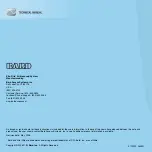
Flushing
313997A
67
Flushing
•
Flush out old fluid with new fluid, or flush out old
fluid with a compatible solvent before introducing
new fluid.
•
Use the lowest possible pressure when flushing.
•
All fluid components are compatible with common
solvents. Use only moisture-free solvents. See
Technical Data on page 93 for list of wetted compo-
nents to verify compatibility of solvent with wetted
materials. See solvent manufacturers information for
material compatibility.
•
To flush feed hoses, pumps, and heaters separately
from heated hoses, set PRESSURE RELIEF/DIS-
PENSE valves (SA, SB) to PRESSURE
RELIEF/CIRCULATION
. Flush through bleed
lines (N).
•
To flush entire system, circulate through gun fluid
manifold (with manifold removed from gun).
•
To prevent moisture from reacting with isocyanate,
always leave the system dry or filled with a mois-
ture-free plasticizer or oil. Do not use water. See
Important Two-Component Material Information
on page 17.
•
Solvent pails used when flushing: follow your local
code. Use only metal pails, which are conductive,
placed on a grounded surface. Do not place pail on
a nonconductive surface, such as paper or card-
board, which interrupts grounding continuity.
•
To maintain grounding continuity when flushing or
relieving pressure, hold a metal part of dispense
gun firmly to the side of a grounded metal pail, then
trigger gun.
Flush equipment only in a well-ventilated area. Do not
dispense flammable fluids. Do not turn on heaters
while flushing with flammable solvents.
SA
SB
ti9880a1
N
N
















































